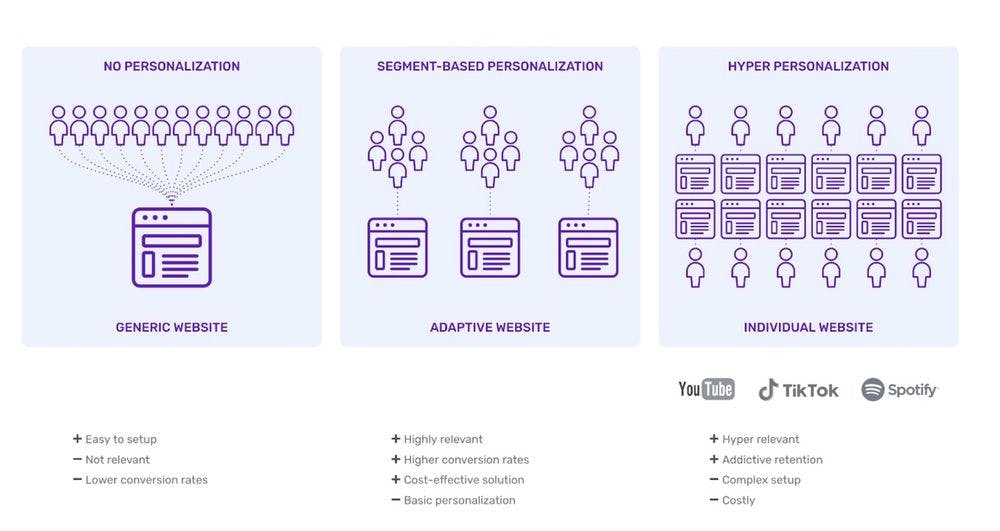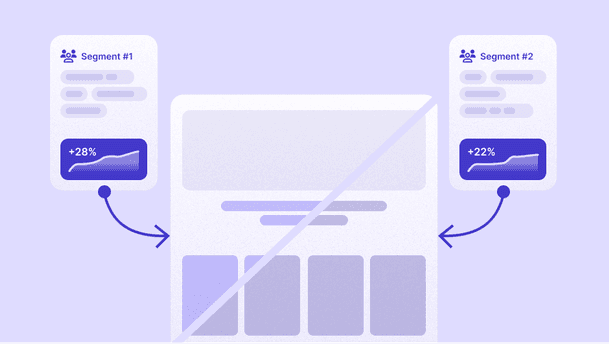Defining Hyper-Personalization vs. Segment-Based personalization
Let's begin by clarifying the definitions of hyper-personalization and segment-based targeting. Hyper-personalization involves tailoring the user experience to the unique preferences and behaviors of each individual. It requires extensive data collection, complex algorithms, and advanced AI systems to deliver personalized content on a granular level.
On the other hand, segment-based targeting focuses on grouping users based on shared characteristics or behaviors. It aims to understand larger audience segments and tailor content to meet their specific needs. This approach allows you to provide relevant information to a larger group of visitors while still delivering a personalized experience.
Gain a deeper understanding of segment-based targeting by exploring the insightful blog post titled Stop Baking 25 Cakes: Use Segment-Based Website Personalization. In this article, we provide a pragmatic explanation of this approach.
Resources and Relevance
The challenge with hyper-personalization lies in the substantial resources it demands—time, money, and expertise. While it promises individualized experiences, the reality is that many of us lack the capacity to invest in such an extensive undertaking. Fortunately, segment-based targeting offers a viable solution.
Segment-based approaches provide you with valuable insights about your target audience through thorough research. By identifying key segments within your customer base, you can create tailored landing pages that address their specific needs. This targeted approach allows you to provide relevant content and offers, making visitors feel understood and valued.

Simplifying with a Headless CMS
Hyper-personalization is often implemented using third-party tools that modify the frontend of your website through an API. However, this can lead to content management complexities and a disconnect from your content management system (CMS). Segment-based targeting, on the other hand, can be seamlessly implemented with the help of a headless CMS like Prepr.





